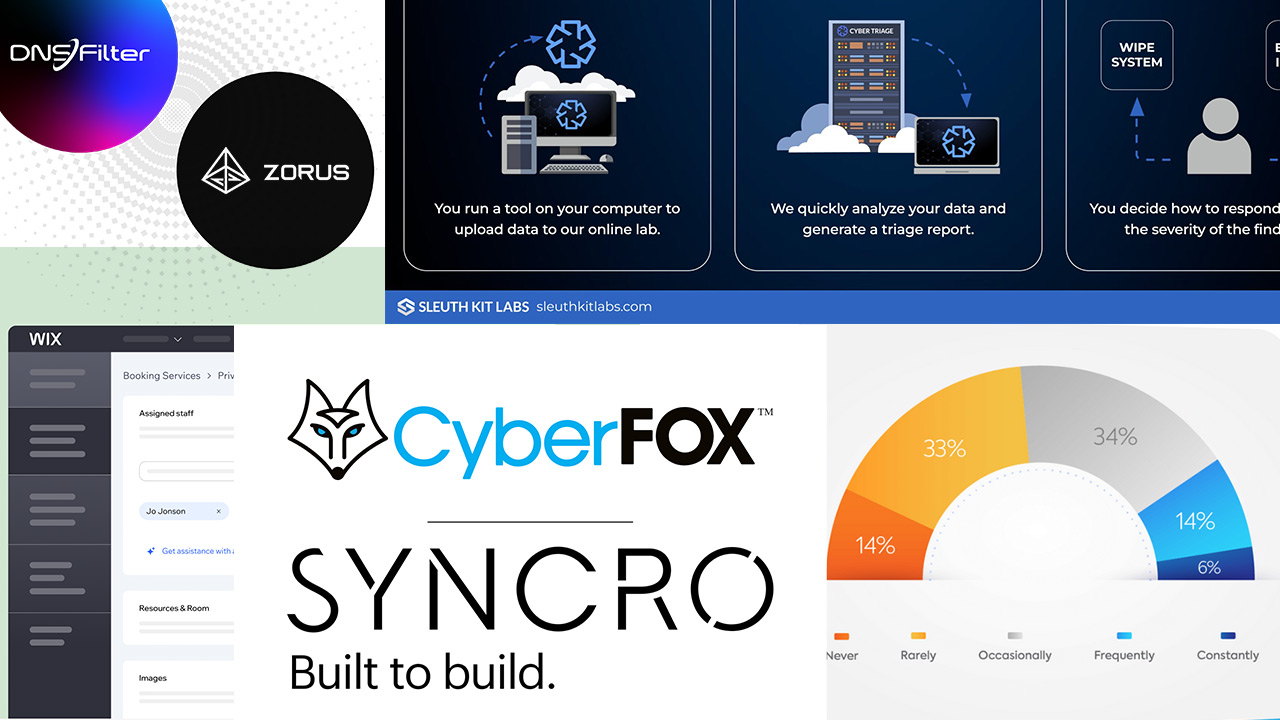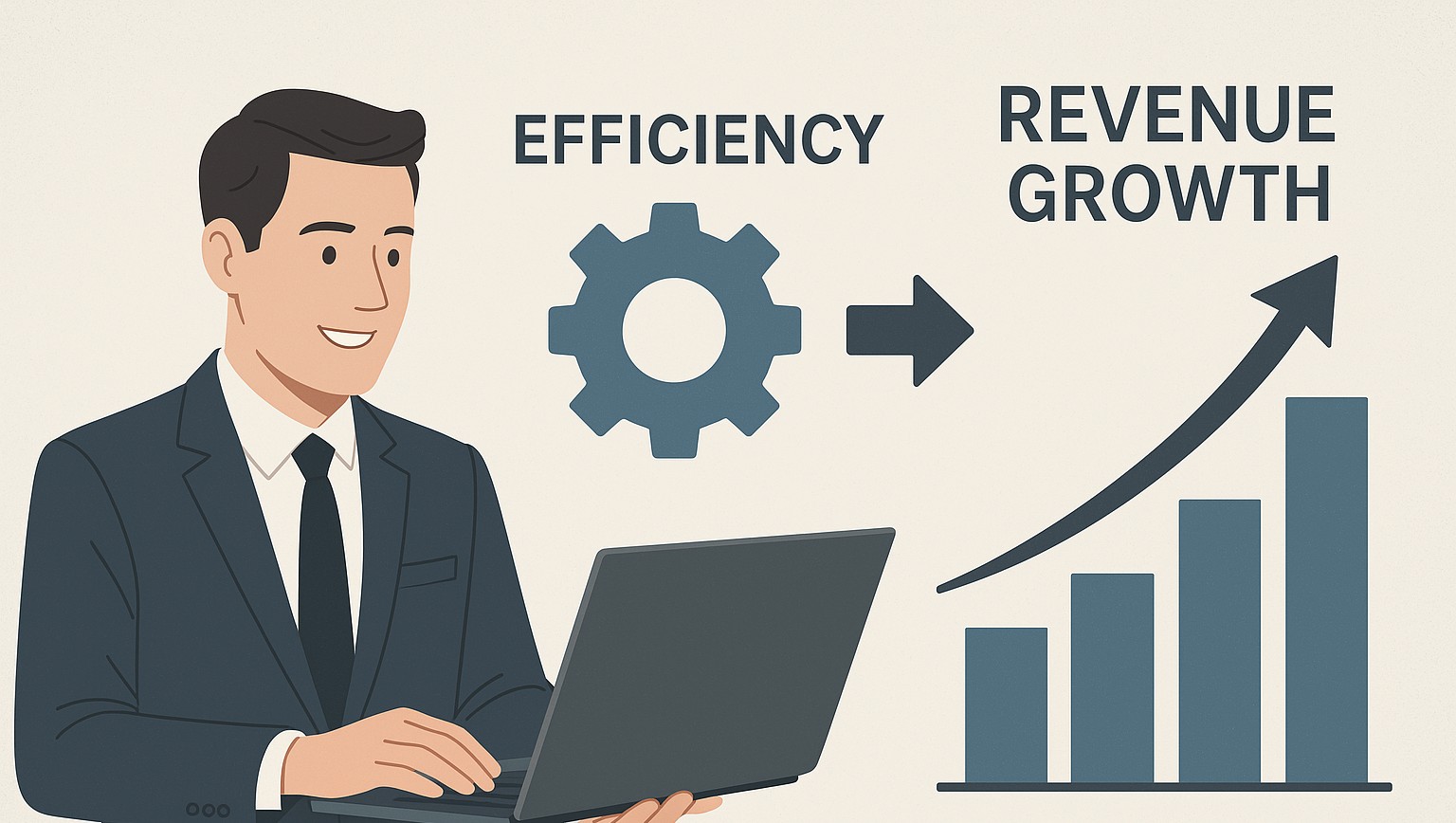In this Article
- Key Highlights
- Introduction
- Trend #1 – Automating MSP Operations
- Trend #2 – AI-powered Predictive Maintenance
- Trend #3 – Zero Trust Cybersecurity
- Trend #4 Extended Detection and Response (XDR)
- Trend #5 – Compliance as a Service (CaaS)
- Trend #6 – Multicloud and Hybrid Cloud Management
- Trend #7 – IoT Device Management
- Trend #8 – Business Intelligence
- Trend #9 – Personalized IT Solutions
- Conclusion
- Frequently Asked Questions
Key Highlights
- Staying Ahead in a Shifting Landscape: The IT channel is constantly evolving, requiring MSPs to proactively adapt to new technologies, client expectations, and security threats.
- Tech Trends Shaping MSPs: AI, automation, Zero Trust, and XDR are revolutionizing efficiency, security, and service delivery.
- New Growth Opportunities: CaaS, multicloud, and IoT security open revenue streams while solving key client challenges.
- Winning with Strategy: MSPs must serve as trusted advisors, delivering personalized IT services and helping business owners make data-driven decisions.
Introduction
Tracking MSP industry trends is critically important. The navigating the IT channel is like navigating the open sea — calm waters one moment, followed by a sudden storm of change the next. Just as experienced sailors must adjust their sails to shifting winds, MSPs need to adapt to emerging technologies, evolving industry trends, and ever-changing client expectations.
For instance, AI-powered automation is steering operations in new directions. Meanwhile, the surge of managed IoT services is rapidly reshaping infrastructure. As a result, staying ahead requires more than just keeping pace. It demands a proactive approach to innovation and a keen understanding of the trends shaping the industry’s future.
In this article, we’ll chart the most critical MSP industry trends, examine their impact, and provide actionable insights on how service providers can harness these changes to drive growth and efficiency. By doing so, MSPs won’t just stay afloat in turbulent waters. They’ll surge ahead, leading the way toward a more dynamic and profitable future.
MSP Industry Trend #1: Automating MSP Operations
 For MSPs, in today’s fast-paced industry, efficiency is the key to profitability. Therefore, AI-driven automation is helping service providers optimize workflows, reduce manual intervention, and deliver faster support. Much like a well-trained crew on a ship, automation handles routine tasks and keeps the vessel steady, allowing the captain to focus on the bigger picture.
For MSPs, in today’s fast-paced industry, efficiency is the key to profitability. Therefore, AI-driven automation is helping service providers optimize workflows, reduce manual intervention, and deliver faster support. Much like a well-trained crew on a ship, automation handles routine tasks and keeps the vessel steady, allowing the captain to focus on the bigger picture.
How Automation Can Help MSPs
- Ticket Categorization and Resolution: AI-driven service desk platforms can automatically classify support tickets and suggest solutions based on historical data, reducing resolution time and improving customer satisfaction. Review your configurations to make sure you’re getting the most out of your help desk software.
- Self-healing IT Systems: AI-enhanced RMM tools can detect and fix common endpoint issues, such as restarting unresponsive services or applying patches without human intervention. This functionality may require testing, so spin up a dummy customer and experiment.
- Chatbots and Virtual Assistants: AI-powered chatbots can handle basic troubleshooting, freeing up technicians for more complex problems. If you can save your team two minutes each work day, you will have saved them an entire day’s worth of productivity over the course of the year.
MSP Industry Trend #2: AI-powered Predictive Maintenance
Just as weather forecasts help ship captains avoid dangerous storms, predictive maintenance empowers MSPs to anticipate IT failures before they disrupt operations. By analyzing their clients’ performance trends and detecting early warning signs, AI enables MSPs to proactively address potential system failures, optimize resources, and minimize downtime.
How Predictive Maintenance Benefits MSPs
 Proactive Hardware Monitoring: AI continuously scans endpoints, servers, and network devices to detect subtle performance declines that signal impending failures. Instead of waiting for a breakdown, MSPs can schedule maintenance or replace failing hardware before it impacts business operations. Set up automated alerts for threshold breaches on CPU temperature, disk health, and network latency to catch issues before they snowball.
Proactive Hardware Monitoring: AI continuously scans endpoints, servers, and network devices to detect subtle performance declines that signal impending failures. Instead of waiting for a breakdown, MSPs can schedule maintenance or replace failing hardware before it impacts business operations. Set up automated alerts for threshold breaches on CPU temperature, disk health, and network latency to catch issues before they snowball.- Optimized Resource Allocation: Predictive analytics helps MSPs anticipate spikes in demand, ensuring they allocate storage, bandwidth, and computing resources efficiently. Use historical data to identify peak usage periods and preemptively scale cloud or on-prem resources to avoid slowdowns or overages.
- Minimized Downtime: By identifying patterns in system logs and recurring issues, AI allows MSPs to resolve problems before they escalate, reducing service disruptions and improving reliability for clients. Implement AI-driven root cause analysis (RCA) tools to pinpoint the source of recurring failures, allowing for faster, more effective remediation strategies.
Additional Resources
Check out the AI and Automation Answer Center for related content on this topic.
MSP Industry Trend #3: Zero Trust Security
A wise captain wouldn’t grant just anyone access to the helm where the ship’s course is set. Similarly, security experts recommend that businesses adopt Zero Trust as their cybersecurity framework. Instead of assuming internal traffic is safe, Zero Trust requires continuous verification of every user and device attempting to access data or systems.
Key Principles of Zero Trust
- Least Privilege Access: Users and devices are granted only the minimum access necessary for their role. This minimizes the risk of insider threats and unauthorized lateral movement.
- Continuous Authentication and Verification: Rather than relying on a one-time login, Zero Trust solutions use multi-factor authentication (MFA), identity verification, and behavioral analytics to monitor user activity in real time.

- Microsegmentation: Networks are divided into isolated zones, or segments, preventing attackers from moving freely if they gain access to one area.
How MSPs Can Implement Zero Trust
- Deploy identity and access management (IAM) solutions with strong MFA policies. Enforce phishing-resistant MFA methods, such as FIDO2 security keys or certificate-based authentication, to mitigate MFA fatigue attacks.
- Implement endpoint security with continuous verification to detect suspicious behavior. Use behavioral analytics to establish baseline activity patterns. If a device suddenly accesses unusual data or locations, trigger an automated security response.
- Use software-defined perimeters (SDP) to enforce dynamic access control. Regularly audit and adjust access policies based on real-time risk assessments, ensuring least-privilege access without disrupting legitimate workflows.
MSP Industry Trend #4: Extended Detection and Response (XDR)
Much like a ship’s radar scans for threats across the entire horizon, extended detection and response (XDR) provides MSPs with a unified view of security threats across endpoints, networks, email, and cloud environments. Instead of relying on separate tools monitoring individual attack surfaces, XDR integrates security telemetry for faster, smarter threat detection and response.
Key Benefits of XDR
- Cross-platform Threat Detection: Unlike standalone tools that monitor only endpoints or networks, XDR aggregates data across multiple security layers, identifying threats that might otherwise go unnoticed.
- Automated Response and Remediation: When a security incident is detected, XDR solutions can automatically isolate compromised endpoints, block malicious IPs, or roll back changes caused by malware.
- AI-driven Analytics: XDR uses machine learning to analyze large volumes of security data, recognizing attack patterns and predicting potential breaches before they occur.
 How MSPs Can Implement XDR
How MSPs Can Implement XDR
- Choose an XDR solution that integrates with existing security tools like firewalls, SIEM platforms, and email security solutions.
- Prioritize XDR platforms with open APIs and third-party integrations to avoid vendor lock-in and ensure seamless interoperability.
- Automate incident response playbooks so threats are neutralized in real time.
- Use AI-driven automation to correlate alerts and trigger responses, such as isolating compromised endpoints or blocking malicious IPs, without human intervention.
- Train IT teams to leverage XDR analytics for proactive threat hunting.
- Conduct monthly threat-hunting exercises using XDR telemetry to identify and remediate hidden threats before they escalate.
Additional Resources
Check out the Cybersecurity Answer Center for related content on this topic.
MSP Industry Trend #5: Compliance as a Service (CaaS)
Businesses are feeling the pressure to stay afloat amid the laws, regulations, and industry-specific expectations and requirements. To a layperson, it can feel like alphabet soup: GDPR, HIPAA, CMMC, NIST, and PCI-DSS. Many organizations lack the expertise to achieve compliance, so MSPs can seize on a significant opportunity.
How CaaS Benefits MSPs and Their Clients
- Navigating Complex Regulations: MSPs can manage policy enforcement, reporting, and security monitoring.
- Reducing Client Liability: Proactively maintaining compliance helps businesses avoid fines and security breaches.
- Ongoing Risk Assessments: Continuous audits detect security gaps before they lead to regulatory violations.
 How MSPs Can Implement CaaS
How MSPs Can Implement CaaS
- Deploy tools that automate compliance reporting and security monitoring.
- Choose compliance automation platforms that map security controls to multiple frameworks (NIST, HIPAA, GDPR, etc.) to streamline audits across different industries.
- Offer security training programs to educate businesses on best practices.
- Use gamified phishing simulations and real-world case studies to keep employees engaged and reinforce security awareness.
- Provide managed risk assessments to identify and mitigate compliance gaps.
- Leverage continuous compliance monitoring to track real-time changes in IT environments, preventing minor misconfigurations from becoming major violations.
Additional Resources
Check out the Compliance and Regulations Center for related content on this topic.
MSP Industry Trend #6: Multicloud and Hybrid Cloud
Business owners need a wise cloud strategy to get the most from their data. However, without an MSP setting the course, they’re likely to overpay for the wrong platform and risk exposing their data to the rest of the world. Beyond just cost savings, a well-planned cloud strategy ensures scalability, security, and seamless integration with existing systems.
For instance, MSPs can help businesses navigate complex pricing models. This way, they only pay for the resources they actually need. Additionally, they can implement security best practices — such as data encryption and access controls — to prevent breaches and compliance violations. By taking a proactive approach, MSPs can guide their clients toward a cloud solution that not only meets their immediate needs but also supports long-term business growth.
Key Challenges MSPs Must Address
- Interoperability Issues: Different cloud providers have unique architectures, requiring seamless integration for smooth data flow.
- Cost Optimization: Without proper management, businesses often misjudge their needs and overspend on cloud resources.
- Performance Management: Workloads must run in the right environment for efficiency and scalability.
How MSPs Can Provide Value
- Implement cloud management platforms that orchestrate workloads across multiple providers.
- Choose platforms with built-in cost optimization and automation features to streamline multicloud management without adding complexity.
- Use AI-driven analytics to optimize cloud spending and resource allocation.
- Set up AI-powered anomaly detection to flag unexpected cost spikes in real time, preventing budget overruns before they happen.
- Provide monitoring tools that track performance and security compliance across all cloud environments.
- Ensure monitoring solutions include compliance mapping to frameworks like CIS Benchmarks and SOC 2 to simplify audits and risk assessments.
Additional Resources
Check out our cloud content section for more information on this topic.
MSP Industry Trend #7: IoT Device Management
Every connected IoT device — whether a smart thermostat, surveillance camera, or industrial sensor — is a potential entry point for cyber criminals. Without proper security, an attacker can infiltrate an entire network through a single compromised device, much like a weak link in a fleet’s defenses can put all ships at risk.
 Key Challenges in IoT Security
Key Challenges in IoT Security
- Lack of Standardization: Many IoT devices come with weak security protocols or default credentials.
- Increased Attack Surface: Each connected device represents another potential vulnerability.
- Firmware and Patch Management: Keeping IoT devices updated is critical but often neglected.
Strengthening IoT Security
- Deploy IoT security platforms that monitor and control access to all connected devices.
- Use network segmentation to isolate IoT devices from critical business systems, reducing the blast radius of potential breaches.
- Implement automated firmware updates and patch management to close security gaps.
- Schedule nondisruptive update windows and use rollback capabilities to prevent downtime from failed patches.
- Implement device identity verification and risk-based access controls to ensure only trusted IoT devices can communicate with your network.
Additional Resources
Check out more IoT content in this curated view of our site.
MSP Industry Trend #8: Business Intelligence
In the vast ocean of IT management, data is the compass that guides businesses toward success. Without it, a clear understanding of system health, security risks, and operational efficiencies remains elusive, leaving MSPs and their clients effectively sailing blind. However, with business intelligence (BI), MSPs can empower their clients to navigate IT challenges with confidence.
 Delivering BI Solutions
Delivering BI Solutions
- Create custom dashboards with real-time analytics on system health, security, and productivity. Design dashboards tailored to different stakeholders. Executives need high-level summaries, while IT teams require granular system health and security metrics.
- Use AI to identify inefficiencies in IT workflows and suggest process improvements.
- Offer quarterly BI reviews to help clients realign IT spending with evolving business goals. This way, they’re investing in the right technologies at the right time.
Additional Resources
How Can MSPs Turn New Analytics Tools Into Big Wins?
MSP Industry Trend #9: Personalized IT Solutions
No two businesses operate the same way, so offering one-size-fits-all IT services isn’t enough. Clients expect customized IT strategies that align with their unique workflows, industry requirements, and long-term goals. By prioritizing personalization, MSPs can make their clients feel valued, strengthen trust, and foster long-term relationships. Ultimately, this tailored approach leads to higher client satisfaction, improved retention, and greater business growth.
 How MSPs Can Offer Personalized IT Solutions
How MSPs Can Offer Personalized IT Solutions
- Conduct regular technology assessments to align IT services with business objectives.
- Review workflows and identify technologies that are being underutilized or misconfigured.
- Offer vCIO services that provide meaningful guidance to internal IT employees.
- Create flexible service plans that scale based on the client’s growth and changing needs.
- Develop knowledge bases and FAQs with step-by-step troubleshooting guides.
- Build self-service opportunities into your solutions, allowing clients to do things like submit payments and submit requests easily.
- Modular service plans let clients choose what they need without exploding MSP costs.
Additional Resources
Check out our Running a Profitable MSP Answer Center.
Conclusion
MSPs that fail to adapt to current trends likely will be left adrift in an increasingly competitive landscape. From AI-driven automation to personalized customer experiences, the ability to harness new technologies and security frameworks will ultimately define success in the years ahead.
Always take a strategic approach. MSPs who think of themselves as captains, not crew, will improve their operational efficiency — and deliver greater value to their clients.
Frequently Asked Questions
How Can AI and Automation Improve an MSP’s Efficiency?
- AI reduces technician workload, but gradual implementation is key to avoid disruption.
- Start with ticket routing and patch management, track improvements, and expand automation strategically.
What Is Zero Trust Security, and Why Is It Important for MSPs?
- Zero Trust is a mindset shift, not just a framework. MSPs should work to create a culture of security within their client’s organizations.
- Communicate why MFA and identity-based access controls are important, even if it slows things down a little.
- Make sure that workflows aren’t completely disrupted every time a new security feature is enabled.
What’s the Biggest Challenge MSPs Face in Managing Multicloud and Hybrid Cloud Environments?
- Preventing hidden costs. MSPs should provide cost visibility tools, enforce governance, and prevent shadow IT.
How Can MSPs Help Businesses Comply with Regulations like GDPR, HIPAA, and CMMC?
- Compliance should be an ongoing service, not a one-time fix.
- Automating compliance monitoring and bundling security services makes it easier for clients to stay compliant.
What Can MSPs Do to Mitigate the Security Risks Associated with IoT Devices?
- IoT devices often go unmanaged. MSPs should perform discovery audits, segment IoT traffic, and automate firmware updates to prevent security risks.
How Do Predictive Analytics Help MSPs Prevent IT Failures?
- Beyond hardware failure, AI forecasts capacity needs, detects network bottlenecks, and helps budget IT upgrades, thereby reducing emergency spending.
What Role Does BI Play in MSP Service Offerings?
- MSPs can use BI to analyze productivity, application usage, and workflow inefficiencies. This positions them as strategic business advisors, not just IT managers.
Images: DALL-E3














